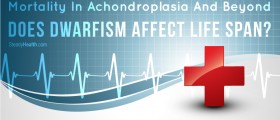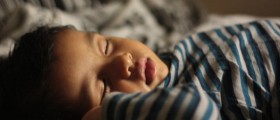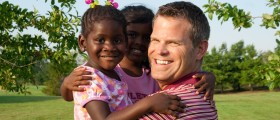
According to the advocacy group Little People of America (LPA) an adult person whose height is less than 4 feet 10 inches (147cm) is considered to have a short stature. Many people are not sure how they should be referring to someone of below average height, so there are several different terms used for this purpose. Dwarf, person or short stature or just little person usually works fine for most of the people affected by the disorder, as well as their name or sir or madam, of course, but if you do not know – ask them what they prefer. Calling them a midget is offensive.
Dwarfism is not just something that happens to people of short stature. This means that parents of average or even above average height may also have a child or children of short stature. About 4 out of 5 children diagnosed from achondroplasia (the most common form of dwarfism) are found to have average-size parents.
Causes of Short Stature in Children
There are about 300 different conditions that might cause dwarfism in children. Spontaneous genetic mutations (changes) before conception in mother’s egg or father’s sperm are believed to cause many of these conditions, while some problems could be inherited from one or both of child’s parents.
As we mentioned earlier, two people of average height may conceive a short stature child, but it also goes in another way, two parents, suffering from dwarfism may also have a child of normal height. However, parents of short stature have more chances to have a dwarf child, but if you want to calculate the chances, you need to visit and talk to a genetic counselor.
Metabolic and hormonal disorders may also cause short stature in children, as well as chromosomal abnormalities, problems with absorption of certain nutrients, kidney diseases or disorders of the pituitary gland.Different Types of Dwarfism
Skeletal dysplasias (abnormal growth of bones) are the most common types of short stature and these can be either short trunk or short limb dysplasias. The name describes how the person looks like, so people with short limb dysplasia have shortened arms and legs and the body of an average size, while short trunk dysplasia causes shortened body, while the limbs remain of average size.
Achondroplasia is a very common form of dwarfism, responsible for 70% of diagnosed cases. This short limb dysplasia affects children of all ethnicities and races and its cause is a spontaneous or inherited mutation in FGFR3 gene. Luckily, mortality in people affected by achondroplasia is very close to people who aren't affected by dwarfism — about 10 years less than a life expectancy of people who aren't affected by the disorder. Children under two years old, who are affected by the disease have a slightly higher mortality rate.
Diastrophic dysplasia is also short limb dwarfism, but much rarer form. It may cause clubfeet, cleft palate or even cauliflower looking ears and shortened calves and forearms.
SED or spondyloepiphyseal dysplasias are short trunk dysplasias. Some of these children might not be properly diagnosed until they turn 5 or even 10 years, because of subtle symptoms. In other cases, SED is visible and identified right after birth.







-And-Children-16-Warning-Signs-And-Symptoms_f_280x120.jpg)









Your thoughts on this
Loading...